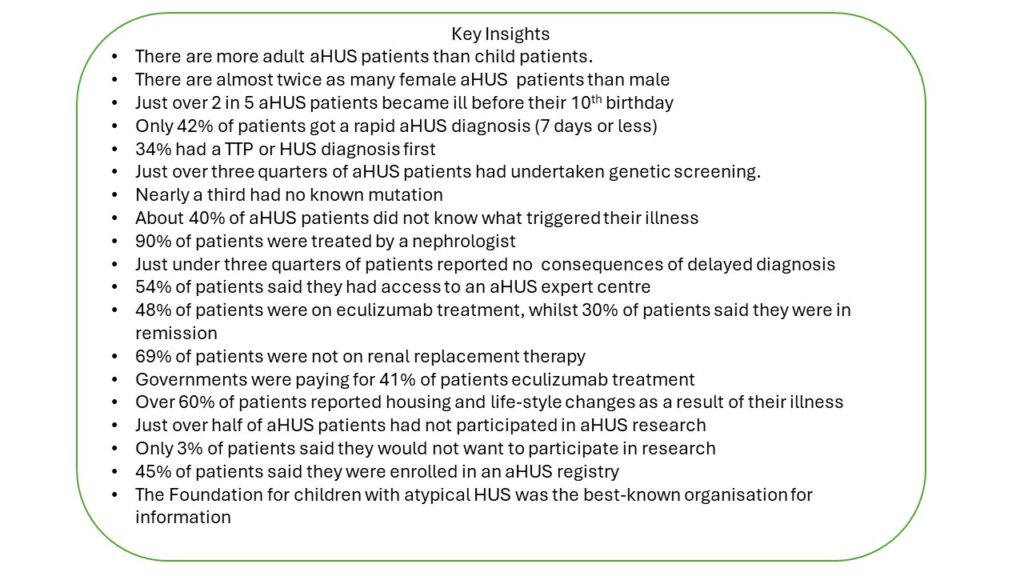10 years ago global information about aHUS patients was more or less non existent. Vey sparse at best.
An aHUS alliance had been created and was working with EURORDIS and its Rareconnect platform.
Rareconnect were encouraging are disease communities to collect data and information about their diseases.
The aHUS community was among the first to respond to the call.
So in 2014 a small group of international aHUS advocates got together to design a questionnaire to gather global information about aHUS and its rare disease issues.
As there was no Global Action website at the time Rareconnect’s platform was used.
The questionnaire, which was translated into French, Spanish , Italian , Dutch was designed with 28 questions.
Questions were asked about:
-The characteristics of aHUS patient , their gender , age , years living with aHUS and what, if any, genetic predisposition they had for aHUS;
– Their experience of the six “pillars “ of rare disease which were diagnosis, genetic screening, treatment access and funding, research and registries, Centres of Excellence, and information
The response to the Poll was remarkable to say the least. 214 people participated from 17 countries.
The data was analysed and a graphical presentation was published . These “graphs” can still be seen HERE.
An idea of what the global patient looked like was revealed for the first time. Together with their experience of having a rare disease.
Below are some of the highlights of the aHUS insights which emerged.

The author wrote an article at time about the findings which can be found HERE.
That was then. What’s aHUS like today?
Rare disease ambitions for the remainder of the 2020s are aHUS ambitions too ( Article No.654).
Has there been any progress in 10 years and will there be progress in the next five years?
The 2024 aHUS community could tell us where we stand today. Couldn’t they?
Article No. 656

